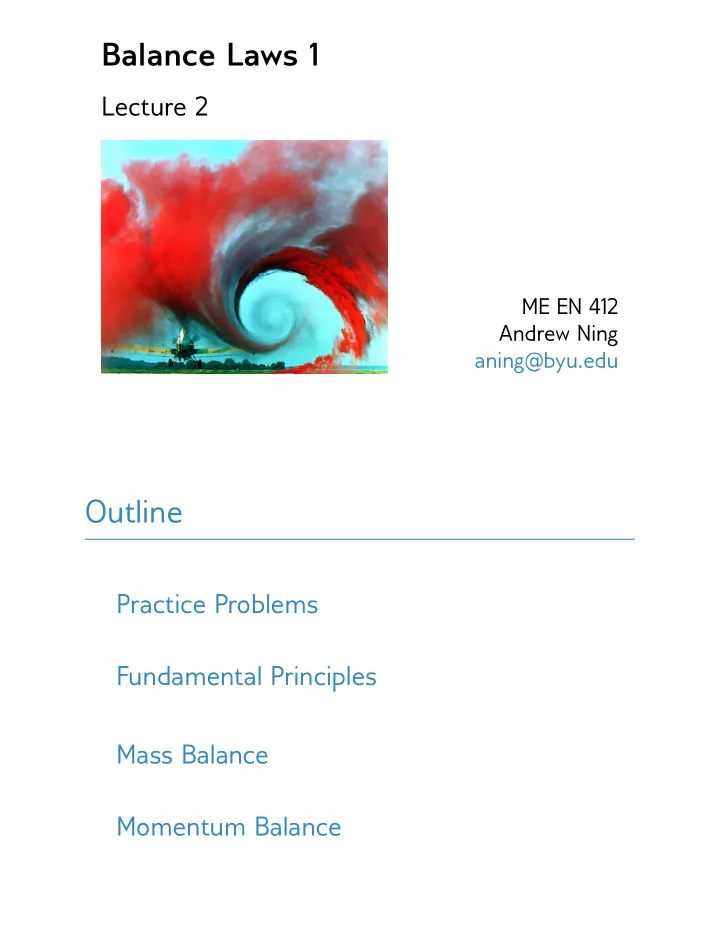

Balance Laws 1 Lecture 2 ME EN 412 Andrew Ning aning@byu.edu Outline Practice Problems Fundamental Principles Mass Balance Momentum Balance
Practice Problems Prob 7.37 A sphere of diameter d falls slowly in a highly viscous fluid. What parameters might be important?
Only a limited number of experiments can be performed. Can we build a predictive model for the settling velocity? From one experimental run: • V = 0 . 42 ft/s • d = 0.1 in • µ = 0 . 03 lb-s /ft 2 • ∆ γ = 10 lb/ft 3 Fundamental Principles
• Mass is conserved. • F = ma (Newton’s second law) and its angular counterpart. • Energy is conserved (first law of thermodynamics). • Entropy will always increase over time (second law of thermodynamics). It can be produced but not destroyed. All of these concepts can be expressed in terms of balance laws: rate of accumulation = rate of inflow − rate of outflow + rate of production
Control Volumes Mass Balance
Derive mass balance. ∂ � � ρ � W · d � ρdV – + A = 0 ∂t V – S
W is the relative velocity Total velocity: V = � � W + � VV – Momentum Balance
rate of momentum accumulation + rate of outflow − rate of inflow = rate of production Newton’s 2nd Law F = d ( m� V ) Σ � dt
∂ � � ρ� ρ� V ( � W · d � A ) = Σ � V dV – + F ∂t V – S Any external forces can be applied, but the most common are the fluid pressure forces, fluid viscous forces, and gravitational forces. Pressure: � Σ � pd � F p = − A S Viscous shear stress: � Σ � τ · d � ↔ F v = A S
∂ � � ρ� ρ� V ( � W · d � – + A ) = V dV ∂t V – S � � � � pd � τ · d � ↔ A + A + F other − S S
Recommend
More recommend